You hear it so often that it barely registers anymore: Take the stairs. But if you want to stay in shape, burn some calories and get the blood flowing, scampering up a few flights really is one of the best things you can do. It’s a fitness tool that’s readily available and free of charge in places where convenient exercise options are often limited, like high-rise hotels, office buildings — or your very own house.
Nobody knows the stairs better than Virgil Aponte, a former strength and conditioning coach of the WNBA’s New York Liberty, who has made stair climbing into something of a fitness art. “Stairs are as viable a fitness tool as a gym or track,” he says. “With some creativity, you can use them to build endurance, strength, power, flexibility or to meet virtually any other fitness goal.”
Known in fitness circles as “The Stair Guru,” Aponte discovered the effectiveness of stair training in 1998 after recovering from an injury; he went on to use them when building renovations forced the Liberty out of the well-equipped training facility they shared with the New York Knicks. Frustrated, he brought his athletes to a stairwell in a local high-rise and improvised a stair-based workout that flattened even his fittest athletes. For the rest of the season, Aponte had team members sprint, jump and hop up staircases as a regular part of their conditioning regimen. Under Aponte’s tutelage, the gym-deprived but exceptionally well-conditioned Liberty ended the ’99 season as WNBA Eastern Conference champs.
“I’ve found that stair climbing actually has some advantages over running,” says Aponte. “It’s more challenging because you’re lifting your body weight against gravity. But it’s also lower impact because your weight doesn’t come crashing down onto your front foot with each step as it does when you run. You just lift up your foot and the stair is there, at the top point in your stride.”
As with any form of exercise, steer clear of stair climbing if it causes you joint pain during or after exercise. And because of the danger of falling, stair workouts aren’t a great idea for people who have trouble balancing or are just getting back into fitness after a long layoff.
These exceptions aside, Aponte says that stair workouts are scalable to suit a wide variety of fitness levels: “If you’re out of shape, you can give yourself a boost using the railings or just take it slow.” Athletic types, on the other hand, can try skipping steps, jumping up stairs on two feet, wearing a weighted vest or sprinting as fast as possible.
Though most people outside of big cities don’t have easy access to 20 stories or more, it’s possible to put together a great stair workout with far less: “Look at all the creative things people do in step aerobics classes,” he notes, “and that’s just one step!”
With that in mind, Aponte has designed three different stair workouts especially for Experience Life readers: one for sea-level folks with access to just a couple of flights (the first workout below), another for city-dwellers and travelers who frequent high-rises, and one for the stair machine (further down).
Give one of these options a try, and next time you’re looking for a fitness challenge, remember: There’s always one waiting for you behind the door marked “Stairs.”
The 30-Minute Challenge
Aponte designed the stair-and-jump-rope workout below for those with a limited number of stair flights available — whether at home, or an office, a gym or a hotel.
Since serious stair climbing is new to most people, Aponte suggests you use the warm-up portion of the workout to test your climbing mettle. If you’re breathing heavily after those six flights, it’s best to stick to that for your first few outings, or take the rest of this workout at a slow and steady pace. See Exercise Key below for instructions.
Walk
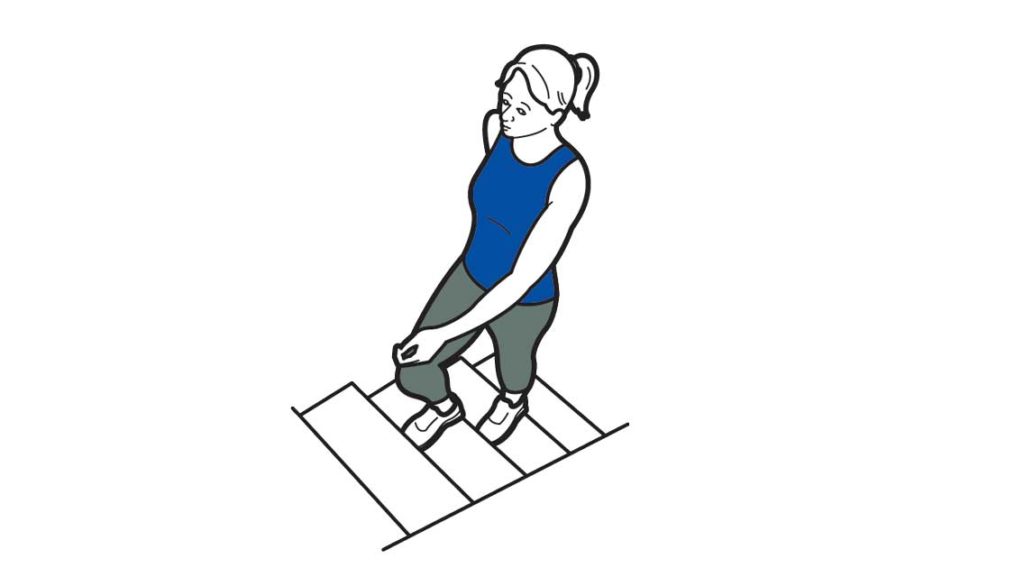
- Walk up the stairs, one or two at a time. If your front knee caves inward when you try to ascend two steps at a time, drop back to one at a time.
Run
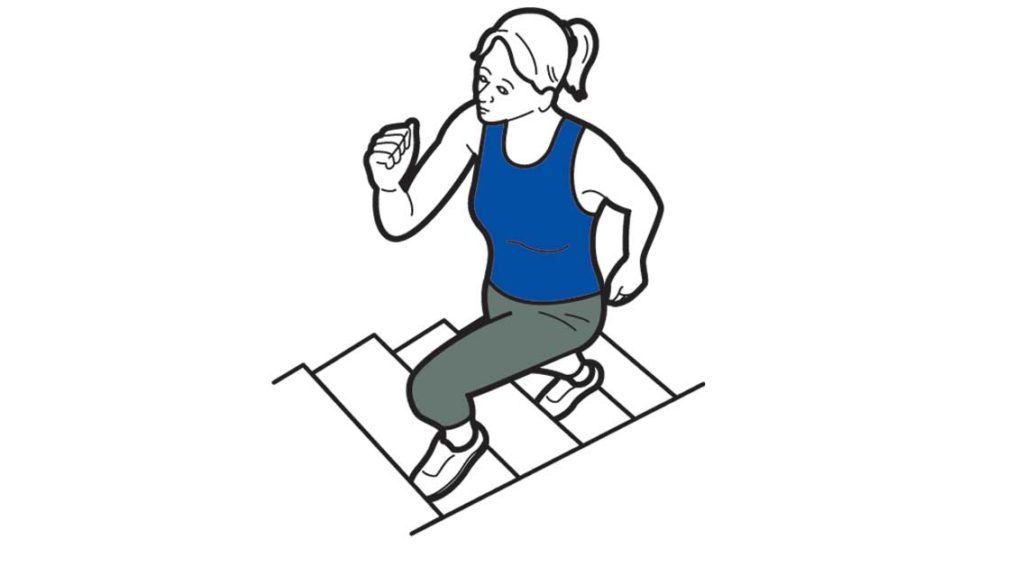
- Pick up your pace, ascending at a quick but careful clip. Use handrails if necessary.
Jump Rope

- Jump at a steady pace that you can maintain for the allotted time.
Reverse Crossover Lunges
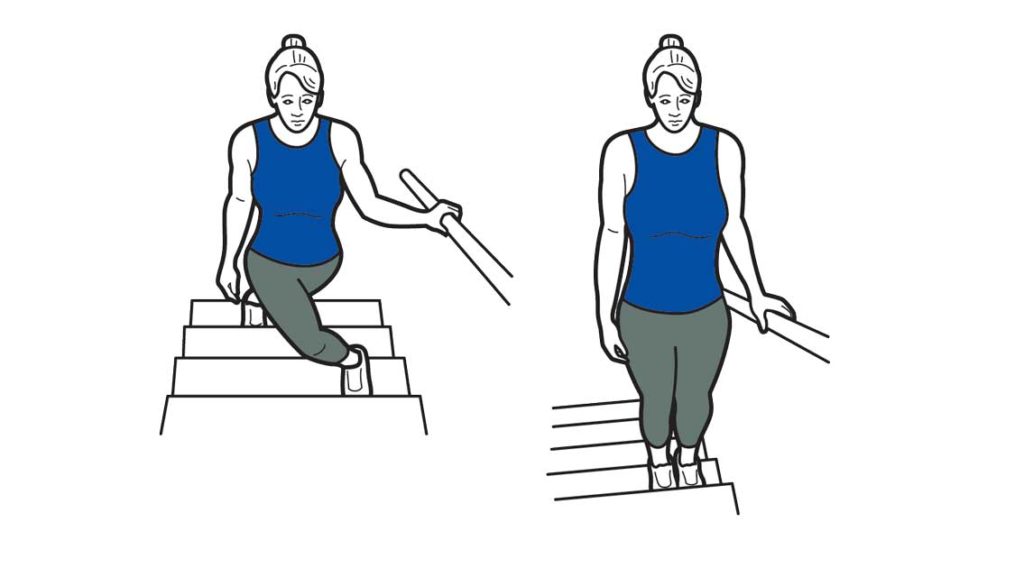
- Stand at the top of the stairs with your back to the steps.
- Holding the handrails, step backward and two steps down with your left foot, crossing it behind and about 12 inches to the right of your right foot.
- Using the handrails for assistance, gradually lower yourself into a lunge, keeping your torso upright and your right knee in line with your right foot.
- Ease your weight backward onto your left foot, and step your right foot down alongside your left.
- Step backward with your right foot and repeat, alternating feet as you descend the stairs.
Crossover Lunges
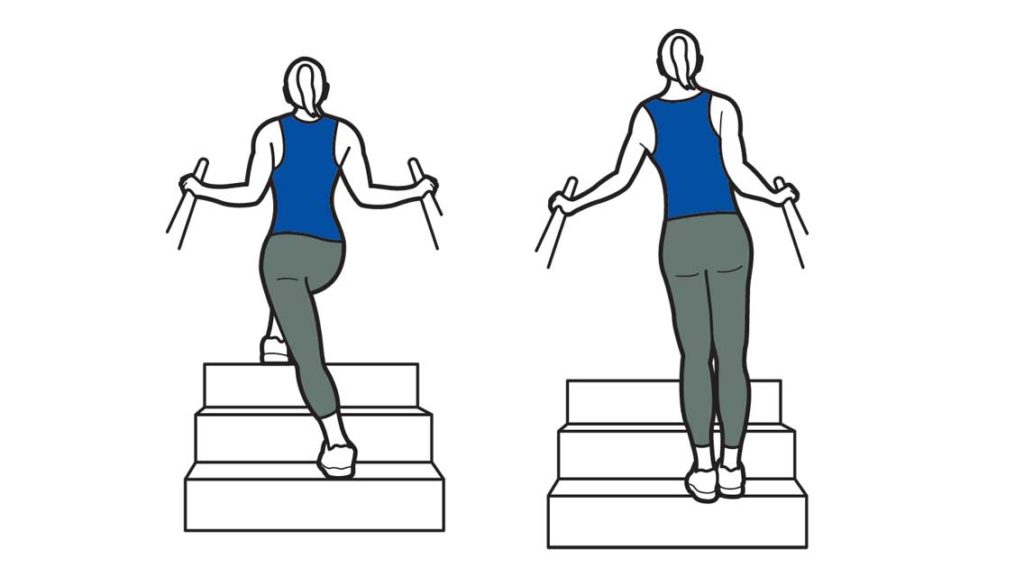
- Holding one or both handrails for assistance, place your right foot up two steps, crossing the right foot in front of and, if possible, to the left of, your left foot.
- Lunge deeply forward, keeping your torso upright, taking care to keep your right knee in line with your right foot.
- Pushing through your right heel, pull yourself up with the handrails, and step your left foot up alongside your right.
- Step forward with your left foot and repeat, alternating feet as you ascend the stairs
Alternating Lunges
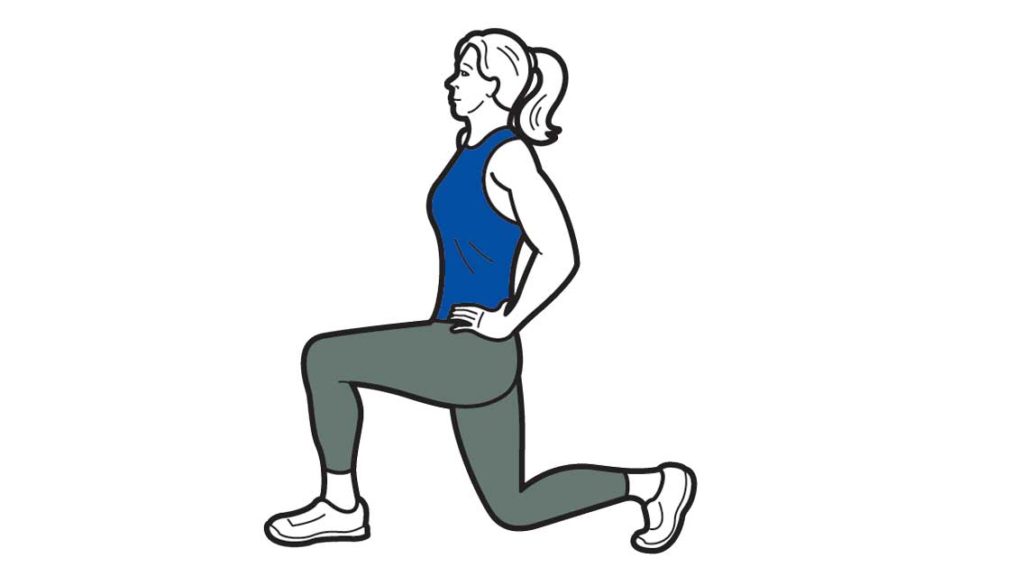
- Stand upright with your feet together and your hands on your hips.
- Step your left foot forward, placing it on the floor about two or three feet in front of you, toes pointing directly forward.
- Keeping your left knee in line with the toes of your left foot and your torso upright, lower yourself slowly into a lunge position, stopping when your right knee is a few inches from the floor.
- Press down through the heel of your left foot and return to the starting position.
- Repeat the movement with your right foot.
Skaters

- As you ascend the stairs, bound side to side as far as you can toward the outside edge of each step, landing on the right foot as you bound to the right and the left foot as you bound to the left. Your movement should resemble that of a speed skater shifting rapidly from one foot to the other.
- Advanced stair climbers can try doing skaters two steps at a time.
Plank Hold
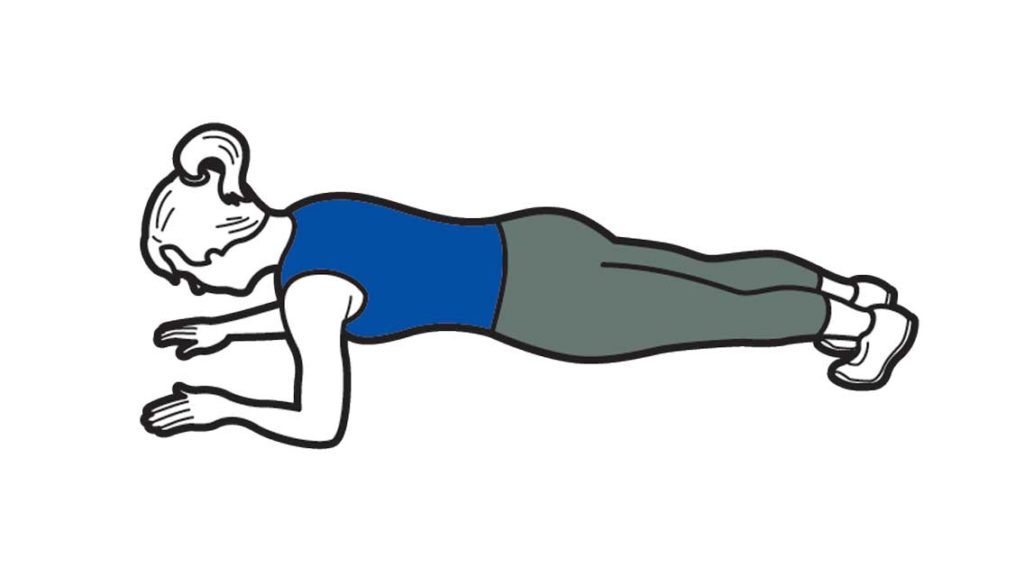
- Perform a standard front plank on your elbows and toes, keeping your back straight and your head and neck in line with your spine.
Pushups
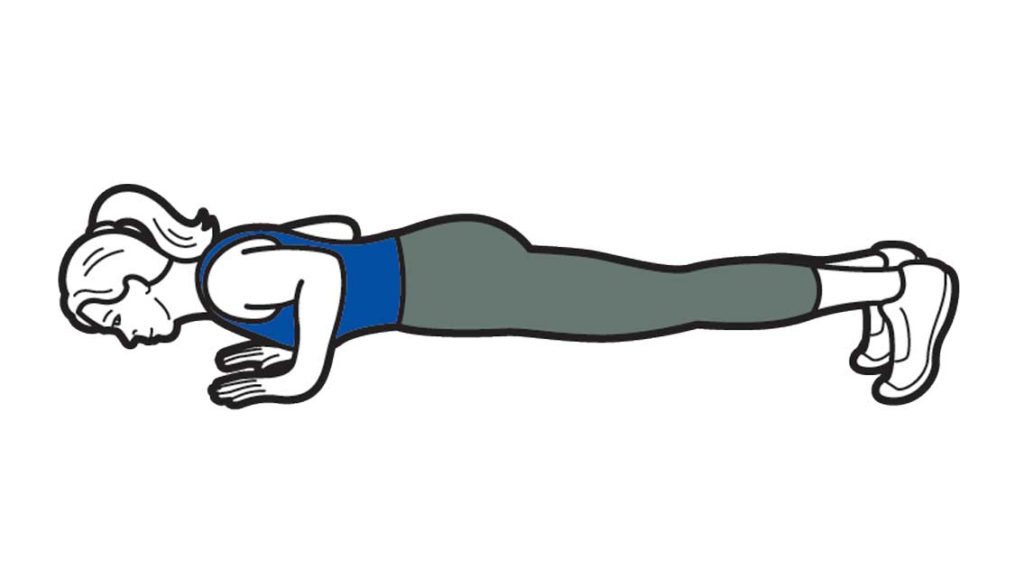
- Perform at medium tempo, keeping your body straight and head aligned with your spine.
- To make it easier, perform the exercise with your hands on the stairs.
- To make it more challenging, elevate your feet instead. (See “BREAK IT DOWN: The Pushup” for variations and directions on fine tuning your form.)
Squats
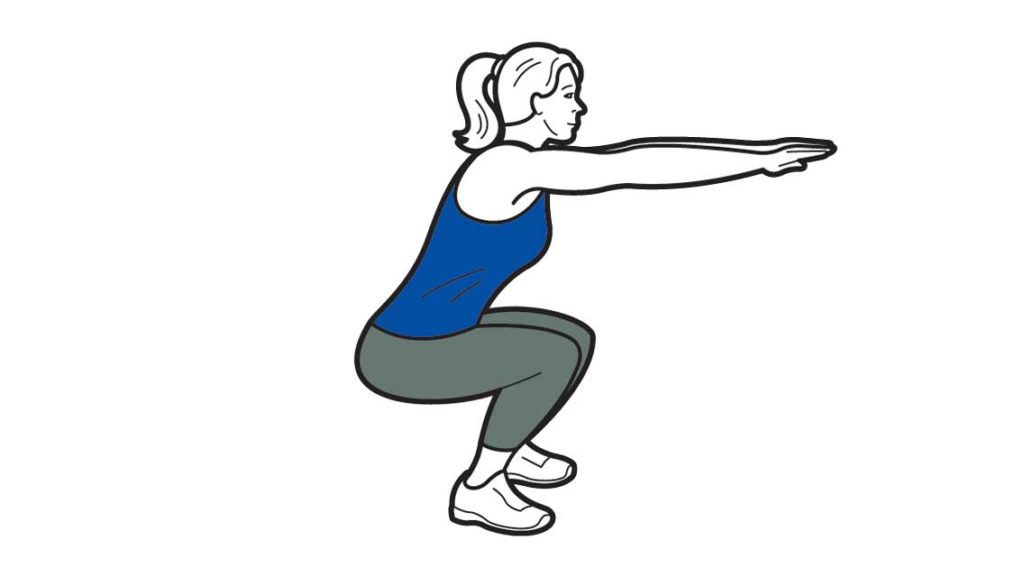
- Stand with feet hip-width apart, toes pointed slightly outward.
- Keeping your eyes level and your lower back in its natural arch, push your hips backward until your thighs are parallel to the floor or slightly below, or until your heels can’t remain flat on the floor.
- Push down through your heels and return to the starting position.
Round 1: Warm-Up
Ascent:
- Walk up two flights – Go at an easy pace, one stair at a time, using the railings if you wish. “Everyone from beginners to pro athletes needs to warm up on the stairs,” says Aponte. This prevents injury and patterns the stair-climbing movement into the nervous system.
Descent:
- Reverse Crossover Lunge – “I learned this movement from a ballerina,” Aponte explains. “Before or after exercise, it’s a great way to stretch the piriformis [pear-shaped muscle in the back of the hip that tends to tighten in almost everyone]. Crossovers help to undo some of the stiffness in the hips that comes from sitting a lot.”
- Repeat ascent and descent a total of three times.
- Jump rope one minute, then rest 30 seconds.
Round 2: Circuits
In this round and the one that follows, you will go up and down the staircase a total of five times, each time in a slightly different manner, performing a body-weight drill at the bottom of the stairs between each climb. This combination of strength-training exercises with stair climbing builds a highly functional combination of both strength and endurance.
Round 3: Running Circuits
In this round, ascend the steps as fast as you (safely) can, descend by walking (or using the reverse crossover lunge, if you prefer), and perform the body-weight exercises specified between climbs. Rest for one minute between each of the five sets.
Round 4 (optional): Jumping Circuits
This round repeats the format of the last two rounds: fast ascent, walk or reverse crossover lunge on the way down, body-weight exercise at the bottom of the steps. This time, however, you’ll perform two-footed jumps on your way up. This technique is for more advanced stair-climbers, so make sure to go easy your first time out.
Ascent: Stair Jumping
- Place your feet hip-width apart and parallel to one another. Jump up the stairs, one, two, or three steps at a time, accelerating to a quick tempo as you get comfortable with the movement.
- Land lightly on each step, making sure your knees don’t collapse inward as you take off or land.
Descent: Walk
- Ascend and descend five times, performing the same body-weight exercises used in the two previous rounds between climbs. Rest two minutes after each set.
Workout Option 2: The 30-Minute, 20-Story Challenge
The workout below is designed for people who have access to a staircase of about 20 stories. If your staircase is much shorter than that, Aponte says, either stick with Workout Option 1, above, or “Bring a jump rope and do rounds of rope skipping to make up the difference.”
Ten flights of stairs works out to about a minute of fast rope skipping, so if your staircase has just 10 flights, jump for one minute at the top of the stairs before heading down for the next round. With the exception of one 15-story descent after your first climb, Aponte recommends descending in the elevator after each climb, rather than on foot: “You don’t get a lot of conditioning benefit from going down stairs, and it can be risky if you go too fast, especially when you get tired.”
So after Round 1, catch your breath for your next climb in the elevator. Again, Aponte suggests you use the warm-up portion of the workout as a test of your current climbing ability, and to keep to a steady, controlled pace if your find the warm-up ascent challenging.
ROUND 1: Walk Up 10 Flights: Go at an easy pace, one stair at a time, using the railings if you wish. Depending on your fitness level and the number of steps per floor, total ascent time will range anywhere from two to four minutes.
- Rest for 30 to 60 seconds.
- Crossover Lunge, 10 flights:
- Perform the exercise as indicated in Workout 1. Lunge up three or four flights, take a 30-second break, and repeat until you’ve climbed 10 flights.
- Descending, 15 flights: Carefully walk down 15 flights, one stair at a time, resting as needed. Though it’s not great for your cardiovascular conditioning, this single, medium-length descent is included because “it improves your ability to decelerate,” says Aponte. This is a crucial skill both for athletes in start-stop games like basketball, and for older exercisers as a safeguard against falling. Lowering your body weight on one leg is also a form of eccentric muscle contraction, which may help fight Achilles’ tendonosis — a deterioration of the Achilles’ tendon, common in active people, that often goes undetected.
- Descending Backward Lunge, Five Flights:
- Grab the handrails and step backward down the stairs two or three steps at a time, alternating legs, assuming a deep lunge with each step.
- Hold the bottom position for a one- or two-count. This lunge variation provides an exceptional dynamic stretch through your hip flexors and extensors, essential for optimal muscle activation during lower-body exercise.
- Rest for one minute before your second ascent.
ROUND 2: Medium-Pace Climb, 10 Flights: Jog up the steps, using every other stair, if possible.
- Rest 30 seconds.
- Skaters, 10 Flights: Perform as indicated in Workout 1.
- Rest for 30 seconds on flights 13 and 16, then take the elevator down to the first floor.
ROUND 3: 20-Flight Sprint: Run up the full 20 floors, as fast as possible, resting only as necessary. Shoot for using every other stair or, if you are comfortable with it, every third stair. Don’t get discouraged if you can’t make it up the full 20 flights at full speed, however. Even the exceptionally fit struggle with this, says Aponte: “I usually hit the wall around floor 16 or 18, and I’ll walk the rest of the way. This is a major anaerobic challenge that builds both strength and power.”
If you have a stopwatch, you might want to record how fast you’re able to make the ascent so you have a time to beat next time. If you’re training with a partner, and the staircase is wide enough, you can also race one another up the steps, something Aponte calls “a major motivator.”
ROUND 4 (optional): If you’re not completely gassed by three 20-flight ascents of escalating intensity, you can add a final, ultra-challenging round. But be warned: These three options, in ascending order of difficulty, are not for the faint of heart.
- Option 1: Two-Foot Jumps, Two to Four Sets of Three to Five Stories Rest one minute between sets.
- Option 2: Ascent With Resistance, Two to Four Sets of Three to Five Stories Wearing a weighted vest, or carrying dumbbells or a medicine ball, ascend the steps as fast as possible, two or three stairs at a time.
- Rest one minute between sets. Be aware, of course, that carrying hand-held weights means you won’t be able to use the handrails. “Use your best judgment and don’t add additional weight until you’re sure you can handle it,” or until climbing 20 stories without weight is relatively manageable. “And don’t go crazy with the loads,” he adds. Ten percent of body weight is plenty to start out with.
- Option 3 (super-advanced!): Buddy Carries, Three to Five sets of Two to Four Flights
- Have a training partner hop on, piggyback style, and carefully ascend the steps, one at a time.
- Take a break as often as you need it, switching off being the carrier between sets. Work up to five sets of about four flights at a time. (If both you and your partner are able to do five sets of four flights — an exceptionally high-level fitness challenge — you’ll have to ascend the 20 flights twice).
Workout Option 3: Stepping Out Inside
This workout is designed for the escalator-like multi-step stair-treadmills, which closely replicate the experience of climbing actual stairs. The advantage of such machines is that you never need to worry about descending.
The disadvantage?
Because the machine dictates your pace, some of the stepping variations that you can do on real stairs aren’t safe. Not to worry: Aponte has broken up the ascent with body-weight exercises so you aren’t climbing for the whole 20 to 30 minutes. Use the handrails as needed.
- 10 story easy walk up, one step at a time
- Pause machine, 30 second rest
- 10 story climb, medium pace, one step at a time
- Pause machine and perform 20 body-weight squats
- One-minute rest
- 10 stories Crossover Forwards (hold handrails!)
- Pause machine and take 30 second rest
- Five stories, medium pace
- Five stories, two steps at a time, if possible
- Pause machine and perform pushups, as many as possible with good form
- One-minute rest
- 20 stories medium-to-fast pace, one or two steps at a time
- Pause machine and perform Alternating Lunge, 20/leg, two-minutes rest
- Optional: 10 stories wearing weighted vest (weighing at most 10 percent of your body weight)
- One-minute rest 10 stories wearing weighted vest
This article originally appeared as “Stair Mastery” in the January/February 2011 issue of Experience Life.
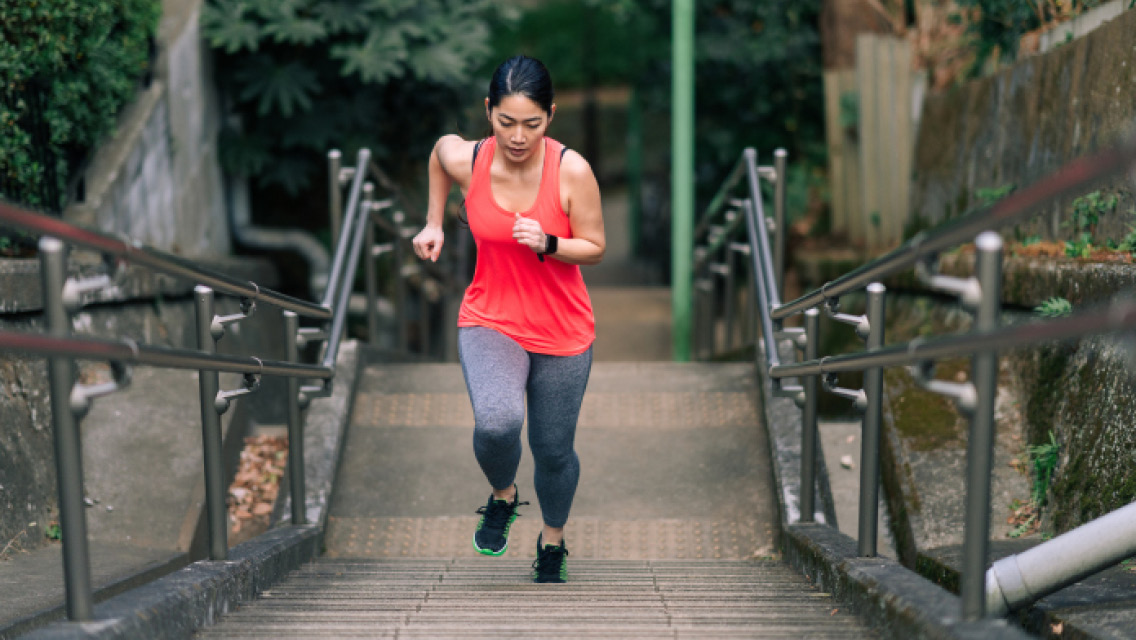
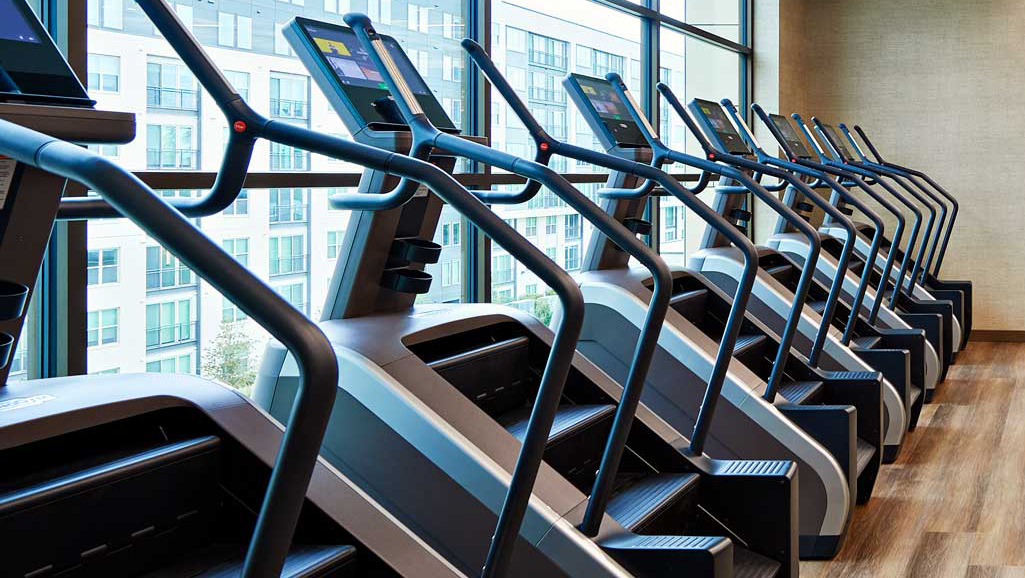

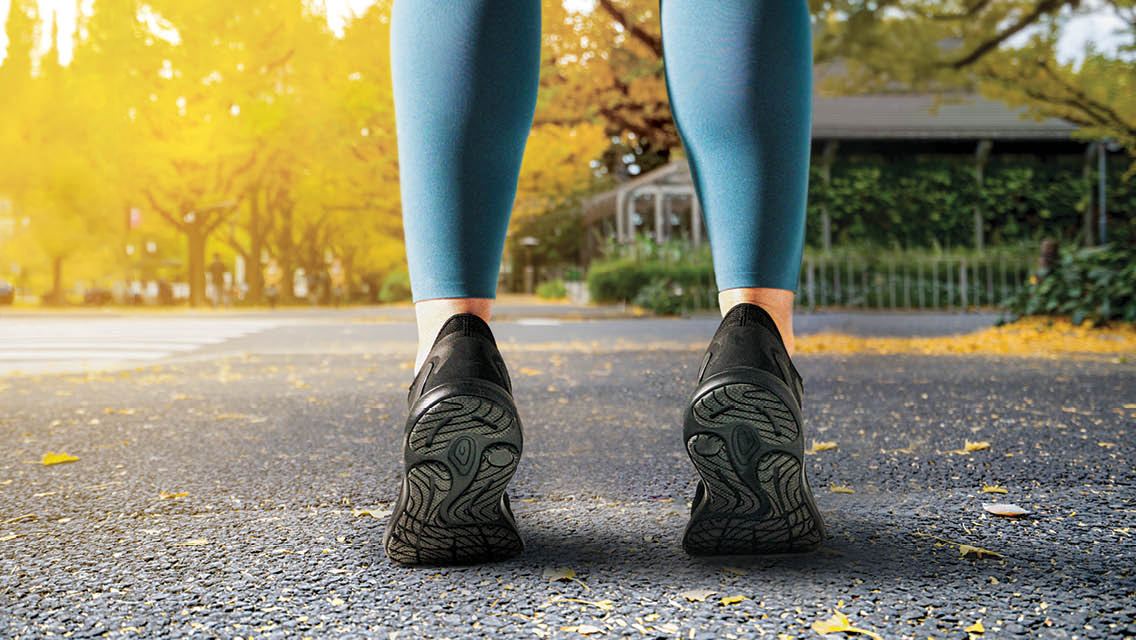
This Post Has 0 Comments